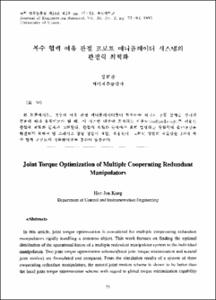Mouse의 심폐이식에서 IL-2 Receptor의 역할에 관한 연구
- Alternative Title
- Analysis of IL-2 Receptor Expression in Heart-Lung Transplanted Mice
- Abstract
- Improved graft survival after organ transplantation is relied upon the innumerable studies concerning the immunologic reactions following antigen exposure and the accompanying strategies against rejection response. Cellular immunity is known to act as a major role in organ transplantation. We performed heart-lung transplantation in mice in order to define cellular immune reactions. For that purpose we analysed the functional role of the immune cells by the cellular cytotoxicity and phenotypic reactions by the IL-2 receptor(R) positive immune cells in the spleen as well as in the graft.
·Mean graft survival after the allogenic heart-lung transplantation in mice(BALB/C to CBA) was 8.5±2.5 days.
·Splenocyte cytotoxicity was the highest on the postoperative day 6 and then decreased abruptly to even lower than that of control mouse.
·Immunohistochemical analysis of spleen harvested consecutively during the postoperative period showed that proportion of IL-2R positive lymphocyte was around 20% in white pulp and scarce in red pulp illustrating nonspecific pattern regardless of rejection.
·Quantitative assay of IL-2R positive splenocyte showed the peak level on the postoperative day 6.
·IL-2R analysis of transplanted heart showed that IL-2R positive lymphocyte infiltated the heart progressively from the epicardium toward the endocardium with the maximal cellular infiltrate progressively from the epicardium toward the endocardium with the maximal cellular infiltrate on the postoperative day 4.
These results illustrate that cellular cytotoxicity and expression of IL-2R positive cells have the consistent finding in terms of roles and diagnostic aid graft rejection following heart-lung transplantation in mice.
Improved graft survival after organ transplantation is relied upon the innumerable studies concerning the immunologic reactions following antigen exposure and the accompanying strategies against rejection response. Cellular immunity is known to act as a major role in organ transplantation. We performed heart-lung transplantation in mice in order to define cellular immune reactions. For that purpose we analysed the functional role of the immune cells by the cellular cytotoxicity and phenotypic reactions by the IL-2 receptor(R) positive immune cells in the spleen as well as in the graft.
·Mean graft survival after the allogenic heart-lung transplantation in mice(BALB/C to CBA) was 8.5±2.5 days.
·Splenocyte cytotoxicity was the highest on the postoperative day 6 and then decreased abruptly to even lower than that of control mouse.
·Immunohistochemical analysis of spleen harvested consecutively during the postoperative period showed that proportion of IL-2R positive lymphocyte was around 20% in white pulp and scarce in red pulp illustrating nonspecific pattern regardless of rejection.
·Quantitative assay of IL-2R positive splenocyte showed the peak level on the postoperative day 6.
·IL-2R analysis of transplanted heart showed that IL-2R positive lymphocyte infiltated the heart progressively from the epicardium toward the endocardium with the maximal cellular infiltrate progressively from the epicardium toward the endocardium with the maximal cellular infiltrate on the postoperative day 4.
These results illustrate that cellular cytotoxicity and expression of IL-2R positive cells have the consistent finding in terms of roles and diagnostic aid graft rejection following heart-lung transplantation in mice.
- Issued Date
- 1993
- Type
- Research Laboratory
- Alternative Author(s)
- Kim,Dae-Won; CHo,Jeong-Hi; Han,Duck-Jong; Lee,In-Chul
- Publisher
- 울산의대학술지
- Language
- kor
- Rights
- 울산대학교 저작물은 저작권에 의해 보호받습니다.
- Citation Volume
- 2
- Citation Number
- 1
- Citation Start Page
- 8
- Citation End Page
- 16
- Appears in Collections:
- Research Laboratory > The ULSAN university medical journal
- 파일 목록
-
-
Download
 000002024197.pdf
기타 데이터 / 580.91 kB / Adobe PDF
000002024197.pdf
기타 데이터 / 580.91 kB / Adobe PDF
-
Items in Repository are protected by copyright, with all rights reserved, unless otherwise indicated.